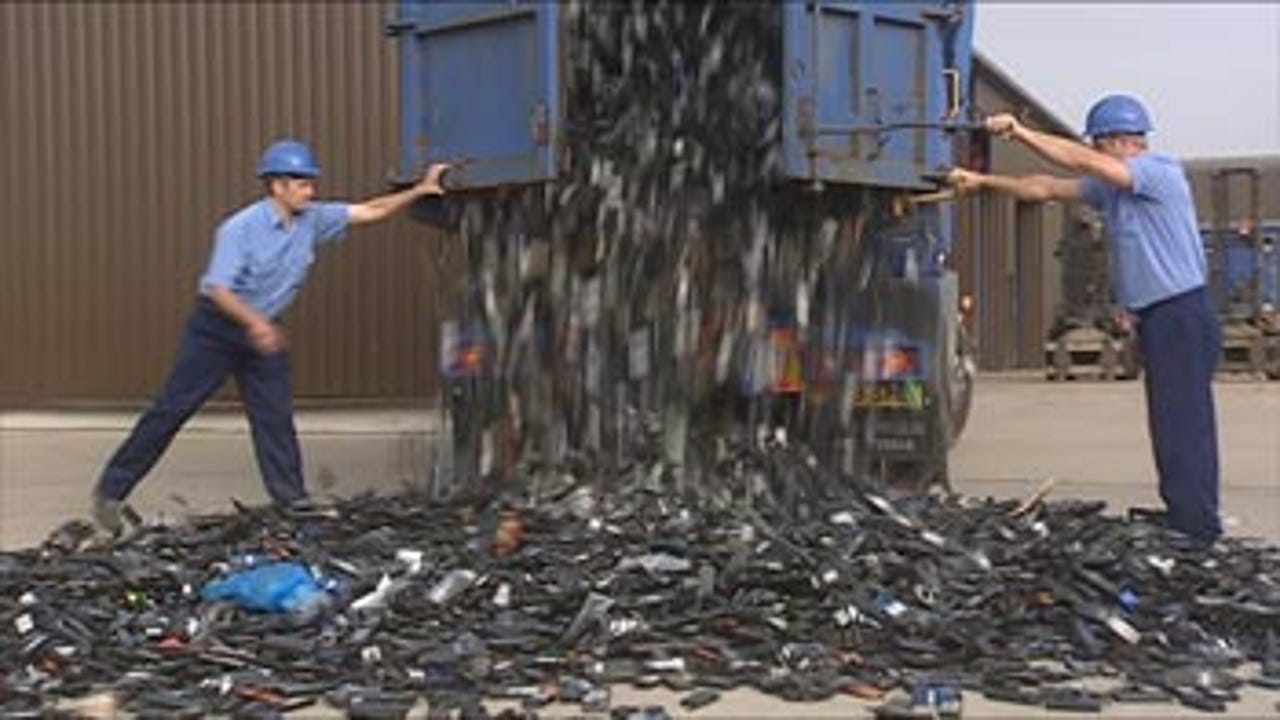Photos: Recycling the mobile mountain


An exhibition has opened at London's Science Museum looking at the issue of mobile phone recycling. Dead Ringers, which is based in the museum's Antenna science and technology news gallery, investigates how the European Waste Electrical and Electronic Equipment (WEEE) directive will impact industry and consumers alike.
There are around 50 million mobile phone users in the UK and global usage of mobiles is expected to reach two billion this year. However, tighter recycling legislation is forcing manufacturers to come up with new and innovative ways of disposing of old phones. Around 1,700 mobile phones are upgraded every hour in the UK alone — end-to-end, they would form a line as long as 18 double-decker buses.
The Dead Ringer's exhibition includes a display of a prototype phone cover with an implanted sunflower seed. As the sunflower grows, it gets additional nutrients from the biodegrading cover. This design developed by Warwick University and PVAXX Research, means green consumers can simply bury their used phone cover in the garden.
The US poultry industry produces more than a billion kilograms of waste feathers every year. Most of these are either burned or buried, but researchers at the University of Delaware have claimed such feathers can be recycled into circuit boards made of soya-bean and chicken feathers.
The circuit boards are created by turning soya-bean oils into an environmentally friendly bio-plastic. The plastic is then mixed with a glass-fibre substitute made by splitting the chicken feathers into small fibres. Feather fibres are made of keratin, the same protein found in hair and nails.
UK materials scientist Roger Wise has developed another solution to the problem of how to dispose of mobile circuit boards. His team have designed a biodegradable board that can break down into natural materials. To illustrate their ideas, the team created their first prototype from sheets of lasagne as they are cheap and have similar properties to the biodegradable materials they hope to develop in the future.
The idea is that plants could be used to create bioplastics for use in circuit boards. These boards could later be broken down in a bioreactor, where micro-organisms would turn them into simpler natural compounds.
The plastics in a mobile can last for hundreds of years in landfill. Every phone contains 0.25g of silver and 0.04g of gold. The 15 million phones we upgrade every year in the UK contain a total of almost four tonnes of silver and 600kg of gold.
The cadmium from one mobile phone battery is enough to pollute 600,000 litres of water -- enough water to keep one person sated for almost 700 years. Although cadmium was phased out of new batteries in the 1990s, old batteries still turn up.
New approaches to battery development are emerging. Oxis Energy is pioneering lithium sulphide electrochemistry to produce a low-weight rechargeable battery.
NEC has developed the world's first commercially available mobile with a biodegradable cover — created out of plant materials from corn and kenaf, a relative of the hibiscus plant. Scientists make the corn into bio-plastics and add kenaf fibres to make the plastic stronger, tougher and more heat resistant. Hopefully this means the cover won't start to break down during everyday use, only when it's buried.